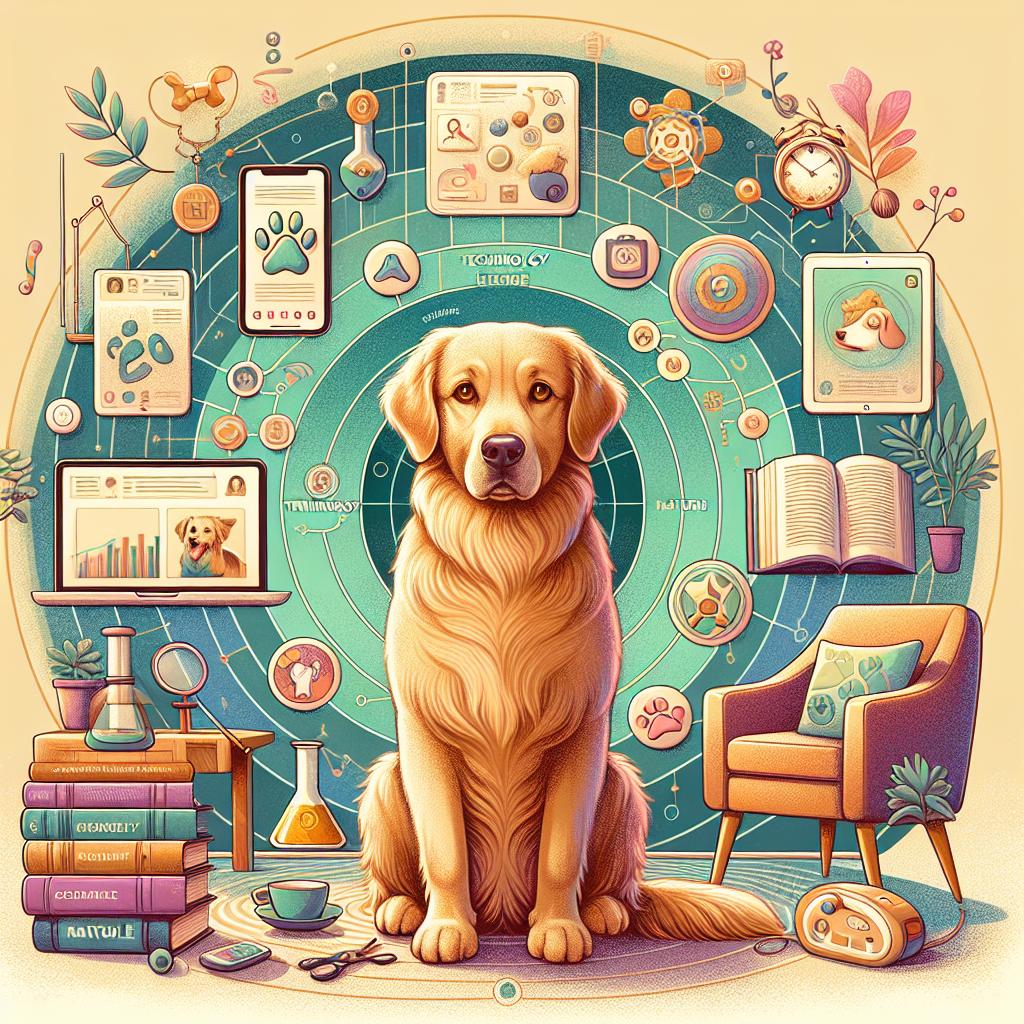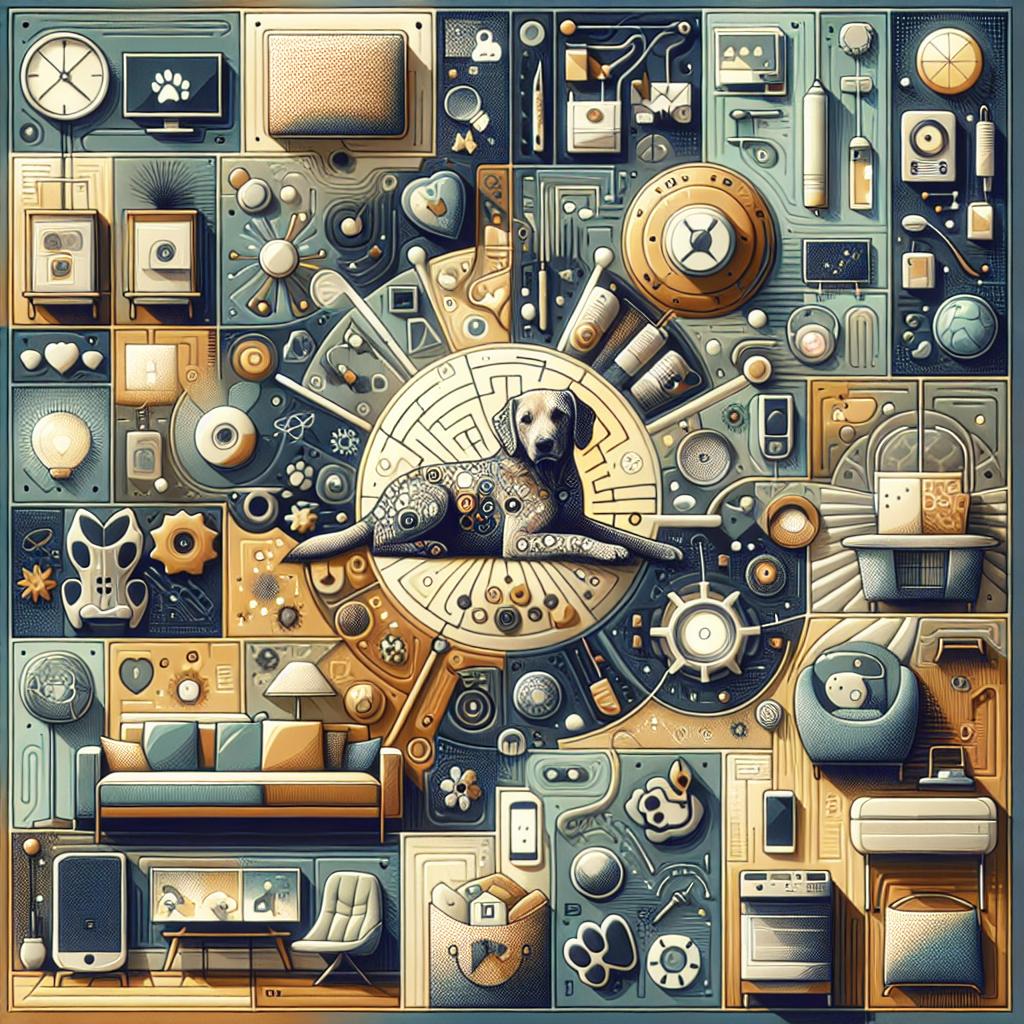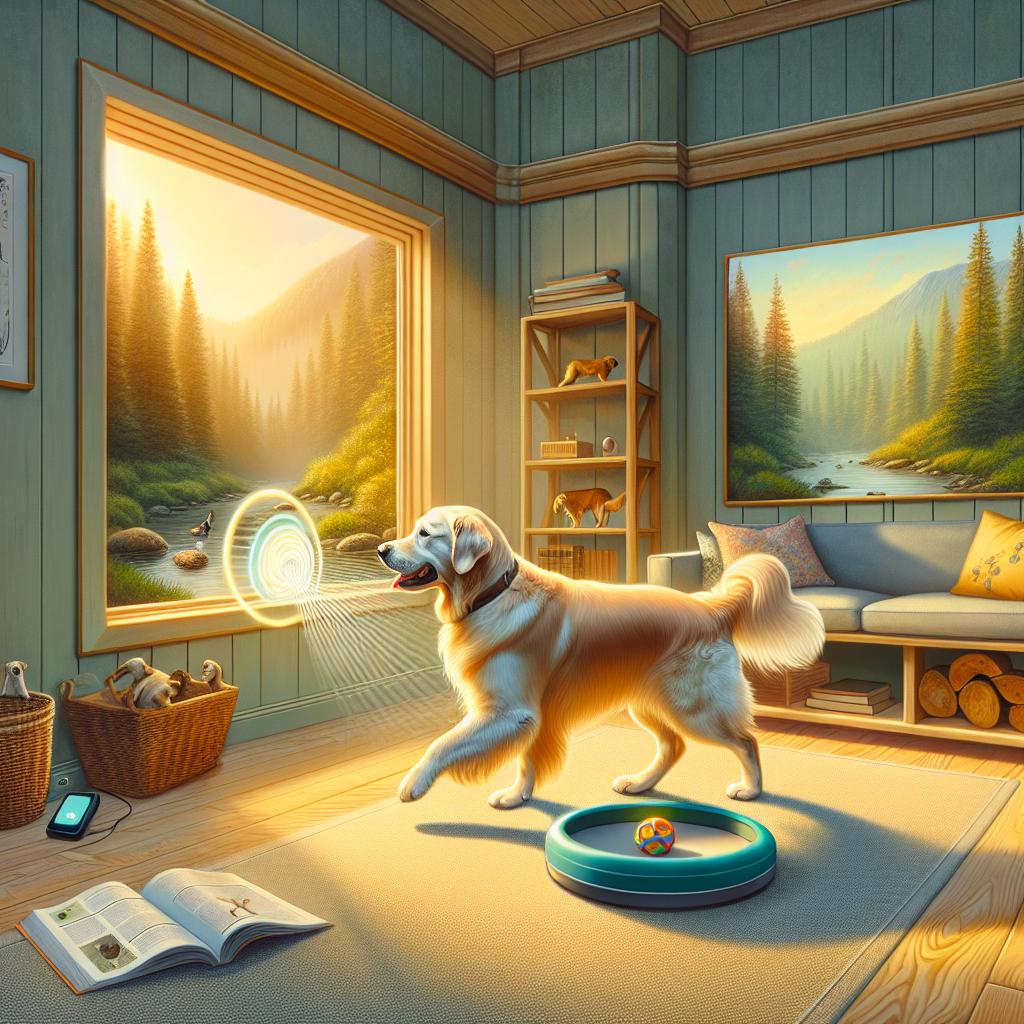Training Your Dog to Be Comfortable with Alone Time
In a world bustling with activity and human connections, our beloved canine companions often find themselves grappling with the challenge of solitude. Just like us, dogs thrive on companionship, yet the reality is that there will be times when they must face the world—or the house—alone. Whether it’s a trip to the grocery store or a long day at the office, fostering a sense of comfort in solitude is essential for a dog’s well-being. This article delves into the art of training your dog to embrace and enjoy their alone time. By implementing gentle techniques and positive reinforcement, you can help your furry friend navigate the transition from a social butterfly to a confident solo sojourner. Join us on this journey to uncover the tips and strategies that can transform your pup’s perspective on alone time, ensuring peace of mind for both you and your four-legged friend.
Understanding Your Dogs Anxiety and Attachment Styles
To effectively address your dog’s anxiety, it’s essential to understand the different attachment styles they may exhibit. Dogs, like humans, can form various bonds, which influence their behavior when left alone. Common attachment styles include:
- Secure Attachment: These dogs feel comfortable being alone and confident in their owner’s return.
- Anxious Attachment: These dogs may exhibit signs of distress when alone, such as whining or pacing.
- Avoidant Attachment: Some dogs may seem indifferent to their owner’s absence but can struggle when left alone for extended periods.
Recognizing your dog’s attachment style is crucial for developing a tailored approach to training. For instance, a dog with anxious attachment may benefit from gradual desensitization, where you slowly increase the duration of alone time. Implementing consistent routines can also foster a sense of security, helping to ease their worries. Consider using a simple chart for tracking your dog’s progress:
| Duration of Alone Time | Dog’s Behavior | Notes |
|---|---|---|
| 5 min | Relaxed | Positive reinforcement |
| 10 min | Whining | Offer a toy to distract |
| 15 min | Settling down | Calm environment |
Creating a Safe Haven at Home for Solo Time
Creating a sanctuary within your home can significantly enhance both your and your dog’s experience with alone time. This space should be comfortable and inviting, ensuring that your furry friend feels secure when they are left alone. Consider setting up a designated area that is filled with their favorite items, such as cozy blankets, chew toys, and a safe bed. You can also add items that carry your scent, which will help reassure them as they settle into their solitude. Incorporating gentle background noise, like calming music or a white noise machine, can further promote relaxation and mask any external sounds that might make your dog anxious.
Establishing a routine for your dog can also play a pivotal role in making them feel at ease during solo time. Dogs thrive on consistency, so aligning their schedule with yours will empower them to recognize when they have some downtime. Here are some tips to consider:
- Practice short departures: Start with brief moments apart and gradually increase the duration.
- Use a crate or playpen: These can provide a secure environment and familiar boundaries.
- Incorporate positive reinforcement: Reward your dog with treats and praise when they soothe themselves during alone time.
- Establish a departure routine: Give your pup a special toy or treat just before you leave to create a positive association.
By focusing on these strategies, you can train your dog to not only feel comfortable with alone time but to truly thrive in their safe haven. Implementing such changes will bolster their emotional well-being and strengthen the bond you share, knowing that they’re content even when you’re not right there by their side.

Gradual Desensitization: Building Independence Step by Step
Building your dog’s comfort with being alone doesn’t happen overnight; it’s a gradual process that requires patience and consistency. Start by setting a routine that allows your dog to spend short periods alone while you are still at home. Begin with simple steps like retreating to another room for just a few minutes. As your dog becomes accustomed to the separation, gradually increase the duration. This can look like:
- 5 minutes alone with you out of sight
- 10 minutes while you step outside
- 15 minutes with a toy or puzzle to keep them engaged
As your dog builds confidence during these alone sessions, it’s crucial to create a positive environment. Reward them with treats and praise when you return, reinforcing their sense of security. You can also use calming aids, such as playing soft music or setting up a cozy den-like space. To help track progress and adjust your approach, consider the following table to monitor your dog’s comfort level over time:
| Session Number | Duration Alone | Dog’s Behavior | Comments |
|---|---|---|---|
| 1 | 5 minutes | Calm | Great start! |
| 2 | 10 minutes | Restless | Consider offering a toy. |
| 3 | 15 minutes | Relaxed | Progressing well! Keep going. |

Engaging Activities to Enrich Alone Time for Your Dog
Your dog’s comfort with spending time alone can be significantly enhanced by engaging them in a variety of enriching activities. Consider introducing interactive toys that challenge them mentally and keep them entertained. Toys like puzzle feeders or treat-dispensing balls stimulate their curiosity while rewarding them for their problem-solving skills. Additionally, rotating their toys regularly can keep their environment fresh and exciting, preventing boredom during alone time.
Another effective way to make alone time enjoyable is to set up a cozy space filled with comforting items. You may incorporate a snuggle blanket, some favorite stuffed toys, or even a piece of your clothing to provide emotional comfort. To further boost engagement, try leaving on a dog-friendly TV show or calming music while you’re away. This can create a soothing atmosphere that eases anxiety. Below is a simple table that outlines some engaging activities you can implement:
| Activity | Description |
|---|---|
| Interactive Toys | Toys that dispense treats or require problem-solving. |
| Comfort Items | Blankets or clothes that smell like you for reassurance. |
| Calming Sounds | Leave on music or a TV show designed for dogs. |
Q&A
Q&A: Training Your Dog to Be Comfortable with Alone Time
Q1: Why is it important to train a dog to be comfortable with alone time?
A1: Just like humans, dogs can benefit from a little alone time. Teaching your dog to feel comfortable when left alone can help reduce separation anxiety, promote independence, and enhance their overall well-being. It’s crucial for situations such as returning to work, running errands, or traveling. A dog that is relaxed at home alone is typically happier and more secure.
Q2: What are the signs that my dog struggles with being alone?
A2: If your dog exhibits signs such as excessive barking, destructive behavior, drooling, or attempts to escape, they may be experiencing anxiety when left alone. You might also notice signs of stress like pacing, panting, or hiding. Observing these behaviors can help you tailor your training approach accordingly.
Q3: How can I start training my dog to be alone?
A3: Begin by creating a positive association with your absence. Start with short separations, leaving your dog in a comfortable space with a favorite toy or a puzzle feeder. Gradually increase the duration you’re away while remaining calm and upbeat when you leave and return. This helps your dog associate your departures and arrivals with positive experiences.
Q4: What’s the role of crate training in helping a dog feel comfortable alone?
A4: Crate training can be a valuable tool in teaching your dog to settle when alone. Many dogs find their crates to be safe and comforting spaces. Use the crate for short periods while you are at home, providing a treat or a toy, to help them see it as a positive environment. Gradually extend the time they spend in the crate when you’re away.
Q5: Are there specific activities or toys that can help distract my dog when left alone?
A5: Absolutely! Interactive toys that dispense treats or engage your dog mentally can help keep them occupied during alone time. Consider items like puzzle toys, stuffed Kongs, or treat-dispensing balls. Additionally, leaving some safe chew items or long-lasting snacks can help pass the time and keep them content.
Q6: What should I avoid doing when training my dog to be alone?
A6: It’s important to avoid making goodbyes and hellos overly emotional. Overly dramatic departures can enhance anxiety. Instead, keep your greetings and goodbyes casual. Also, refrain from punishing your dog for acting out when left alone; this can worsen anxiety and lead to negative associations with being alone.
Q7: How long does it typically take for a dog to become comfortable being alone?
A7: The timeframe varies significantly among dogs, depending on their temperament, past experiences, and how consistently the training is applied. Some dogs may adapt within a few weeks, while others might need several months. Patience and consistency are crucial; every dog learns at their own pace!
Q8: Is professional help necessary for teaching my dog to feel comfortable alone?
A8: While many owners can effectively train their dogs on their own by using consistent methods, seeking help from a professional trainer or behaviorist can be beneficial, especially for dogs showing severe anxiety. They can provide tailored strategies and support to ensure your dog’s success in overcoming stress related to being alone.
Q9: What are the long-term benefits of training my dog to be comfortable alone?
A9: Training your dog to be comfortable when alone can foster a more balanced and relaxed pet. This training reduces the likelihood of issues like separation anxiety, contributes to a peaceful home environment, and allows for stress-free outings when you need to leave your dog behind. In the long run, both you and your dog will enjoy a more harmonious relationship!
By addressing common concerns and offering helpful tips, this Q&A aims to empower dog owners to facilitate a smoother transition to alone time for their furry friends. Happy training!
Concluding Remarks
As we conclude our exploration of the important journey toward teaching your dog to embrace alone time, remember that patience and persistence are your greatest allies. Just like us, our furry friends need time to adjust to new routines, and each step you take is a step towards their confidence and independence. By incorporating gradual departures, engaging toys, and positive reinforcement, you’ll not only create a sense of security for your pet but also cultivate a deeper bond built on trust.
the goal is to ensure that your pup feels safe and content in their own space, allowing both of you to enjoy your time together and apart. So take a deep breath, channel your inner trainer, and embark on this rewarding adventure. With love and commitment, you’re not just training a dog—you’re nurturing a well-rounded and happy companion. Remember, every small victory counts, and soon you’ll both find joy in the art of being alone together. Happy training!

